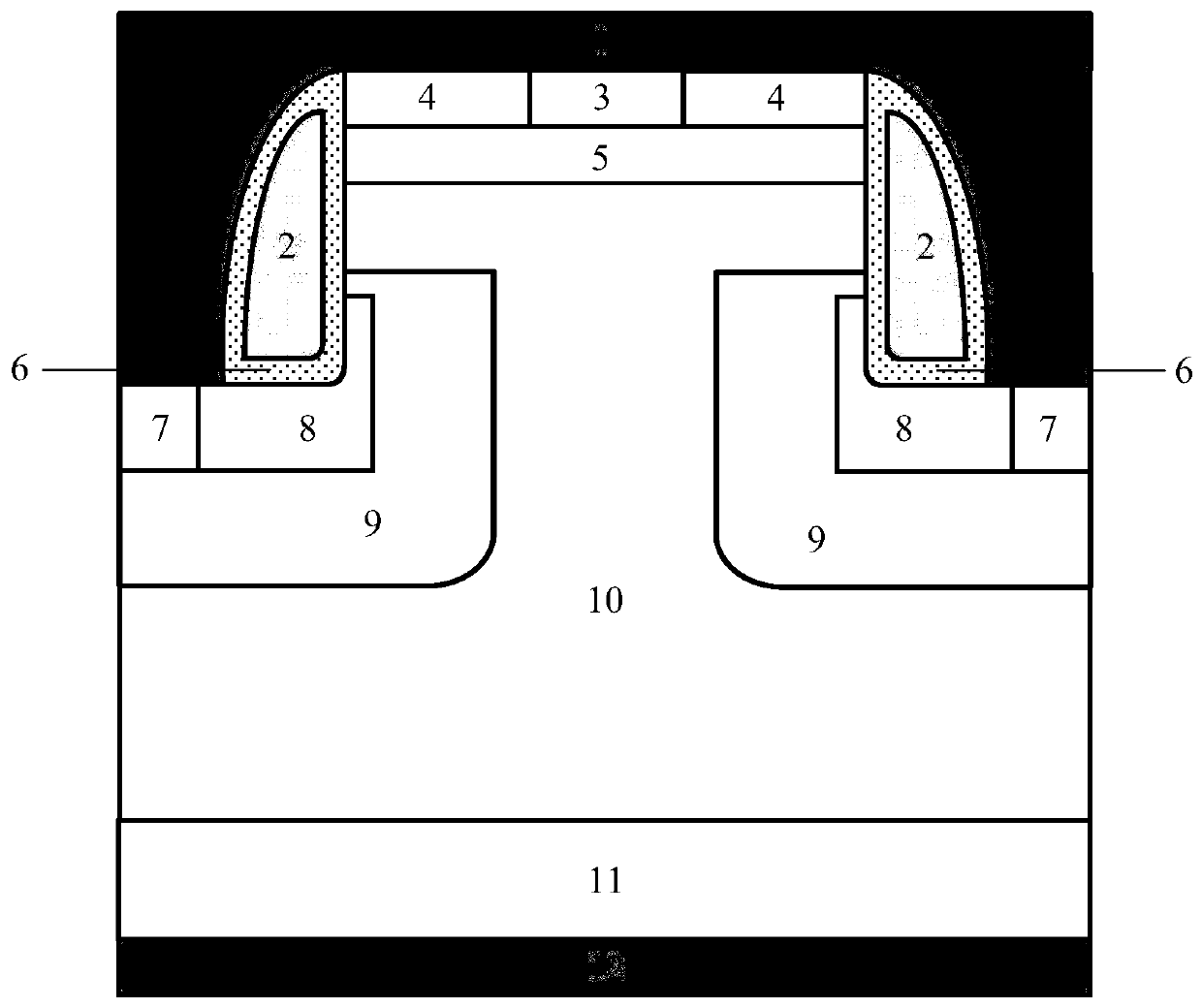Low-power-consumption and high-reliability trench silicon carbide MOSFET device
A reliable, trench-type technology, applied to semiconductor devices, electrical components, circuits, etc., can solve problems such as weak short-circuit capability, high switching loss, and large gate-to-drain capacitance, so as to reduce saturation current, improve short-circuit capability, and reduce The Effect of Switching Losses
- Summary
- Abstract
- Description
- Claims
- Application Information
AI Technical Summary
Problems solved by technology
Method used
Image
Examples
Embodiment 1
[0026] Such as figure 2 As shown, a trench silicon carbide MOSFET device with low power consumption and high reliability of this embodiment includes: an N-type substrate 11, an N-type epitaxial layer 10 located above the N-type substrate 11, and an N-type epitaxial layer The second P-body area 9 above the layer 10, the second P+ contact area 7 and the second N+ contact area 8 located inside the second P-body area 9, the second P+ contact area 7 and the second N+ contact area 8 The upper source electrode 1, the gate dielectric 6 located above the second N+ contact region 8, and the trench gate inside the gate dielectric 6, the first P-body region 5 located between the gate dielectrics 6, and the first P-body region 5 the two first N+ contact regions 4 above, the first P+ contact region 3 between the two first N+ contact regions 4, the source electrode 1 located above the first P+ contact region 3 and the first N+ contact region 4 The drain electrode 12 is located under the devi...
Embodiment 2
[0030] Such as image 3 As shown, the difference between the device structure of this embodiment and Embodiment 1 is that the trench gate 2 and the gate dielectric 6 are in an inverted L shape, and the inverted L shape includes a horizontal section and a vertical section connected below the horizontal section. An N-type epitaxial layer 10 is provided between a P-body region 5 and the gate dielectrics 6 on both sides. The horizontal sections of the trench gate 2 and the gate dielectric 6 are located in the first N+ contact region 4, the first P-body region 5 and N Above the type epitaxial layer 10, a gate dielectric 6 is provided between the trench gate 2 and the first N+ contact area 4, the first P-body area 5, and the N type epitaxial layer 10.
Embodiment 3
[0032] Such as Figure 4 As shown, two first P-body regions 5 are provided between the gate dielectric 6, two first P+ contact regions 3 are provided between the two first N+ contact regions 4, and one of the two first P+ contact regions 3 An N-type epitaxial layer 10 is provided between and between the two first P-body regions 5, and the N-type epitaxial layer 10 forms a Schottky contact with the source electrode 1. The advantage of this is that the performance of the third quadrant of the device is improved.
PUM
 Login to View More
Login to View More Abstract
Description
Claims
Application Information
 Login to View More
Login to View More - R&D
- Intellectual Property
- Life Sciences
- Materials
- Tech Scout
- Unparalleled Data Quality
- Higher Quality Content
- 60% Fewer Hallucinations
Browse by: Latest US Patents, China's latest patents, Technical Efficacy Thesaurus, Application Domain, Technology Topic, Popular Technical Reports.
© 2025 PatSnap. All rights reserved.Legal|Privacy policy|Modern Slavery Act Transparency Statement|Sitemap|About US| Contact US: help@patsnap.com



